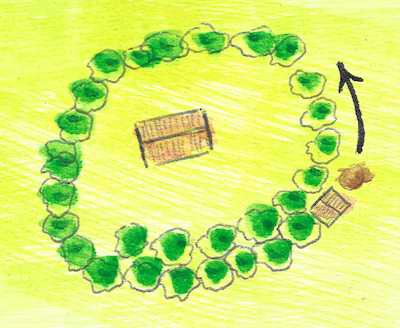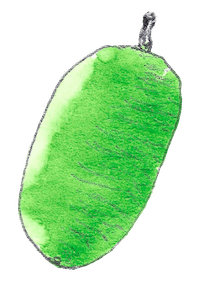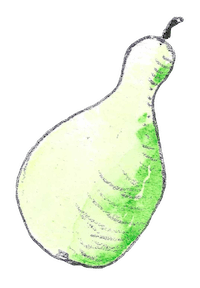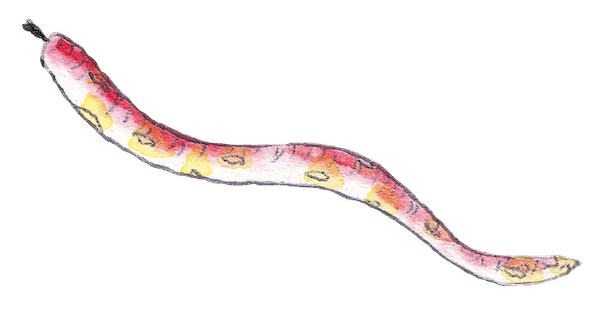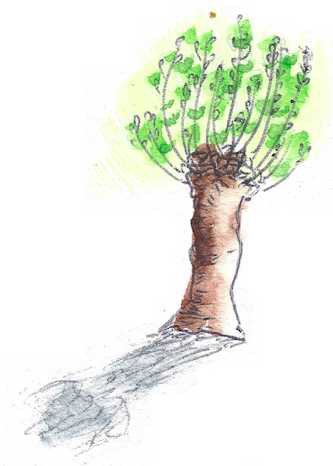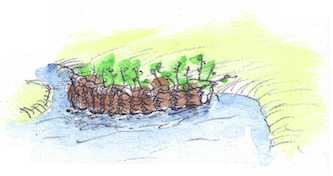Three agroecological experiments to prepare our forest garden project

This letter is the 3rd episode of my 🔭 Laboratory Logbook, a monthly newsletter where I share my explorations.
In order to start preparing our future experimental food forest, before we settle on a piece of land, I have been experimenting at my parents’ place.
I am exploring different ways of growing plants with as little inputs as possible, growing vegetables along trees and hens, diversifying the production to biomaterials in addition to food, etc.
Here are the 3 main agroecological experiments that I am working on these days…
Table of Content
1. The snake vegetable garden
One big question in the design of small autonomous houses is, what to do with our pee and poo?
During my studies in agronomy, I learned how some farmers in Burundi, Africa, were kick-starting their banana plantations thanks to movable dry toilets.
They dug a hole, installed a cabin above it, and used the space to relieve themselves. After some time, they removed the shed, planted a banana tree in this pit full of super-rich human manure, or humanure, and started over again with a new hole just next to this young banana tree.
Poop after poop, banana tree after banana tree, they would regenerate ecosystems, gradually converting poor lands into lush agroforests.
I love this story. So, I started to do the same around our experimental tiny house.
Instead of seeing our droppings as pollution harmful to the environment, why not see them as a resource for ecosystem remediation? A sacred gift, elaborated with love in the intimacy of our guts, carefully deposited like offerings to the earth. A free, local, and DIY fertilizer, to kick-start any kind of agroecological project just around your house.
Each time our dry toilet bucket is full, I dig a hole, pour the bucket into the hole, cover the hole with some soil, and plant a mixture of annual plants, perennial vegetables, and berry bushes.
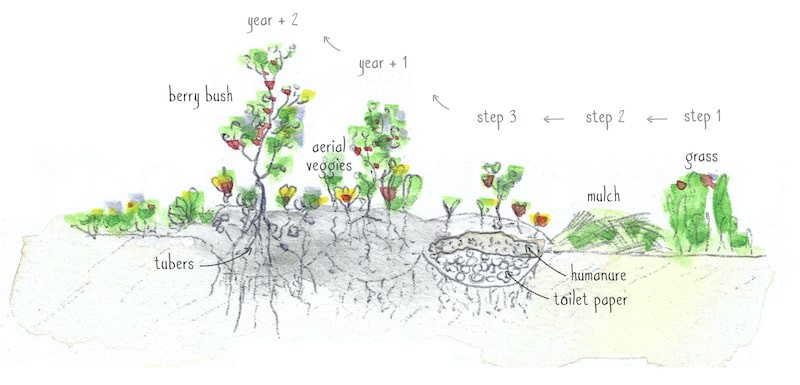
After about 1 year, we can harvest aerial vegetables like tomatoes or kale leaves. After about 2 years, we should be able to harvest berries like currants or raspberries. After about 3 years, tubers like potatoes or Jerusalem artichokes should have multiplied a lot, in a very rich dark compost smelling like forest soil.
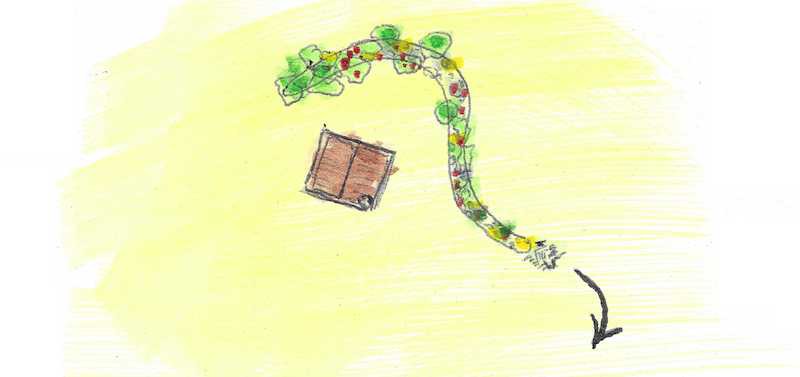
Meanwhile, poop after poop, our vegetable garden keeps expanding, like a snake around the house…
2. The vegetable forest-garden
Fifty meters away from the snake-garden experiment, is the vegetable forest-garden plot, which should return under my mother’s management at some point, when we will find a lucky land on which to set my agronomic creativity.
The vegetable forest garden is about 100 m2, with a chicken coop, a pond, a vegetable and aromatic garden, an edible hedge, some dry toilet composting buckets, and a mini plant nursery.

This place looks like a mess. Yet, according to local slugs, it is, throughout Burgundy, the spearhead of fabulous agronomy research, a still little-known research field.
A unique place, where chickens claim to be fraternally accepted among the vegetables, even if, they confess, they sometimes have the strange feeling of being obsessively observed when they stroll through the vegetable garden — specifically when innocently tasting lettuces or awkwardly uprooting sunflowers.
In this agronomic trial, I get inspiration from agroforestry, permaculture, syntropic agriculture, subtle farming practices, ancient craftsmanship, etc.
Although this agroecosystem is still very young, complex interactions are starting to occur, such as when fertility in hens’ droppings flows from the chicken coop to the vegetable garden; when a complex play of light and shadow unfolds throughout the day; when frogs from the pond seem to start regulating slug population in the vegetable garden at night; when the dense root system of sour cherry trees hopefully absorbs some leached minerals below the dry toilet composters; and when hens, of course, play the role of mega-herbivores sometimes strongly perturbing this small and still fragile ecosystem.
This year, among a growing number of medicinal plants and perennial vegetables, I planted some gourds, with a variety of enigmatic shapes, to start learning how to grow my own objects in the garden.
So far, by the end of June, I am proud to announce to the world that it is the first time in my entire life that plants really grow in my garden. We have already eaten lots of courgettes, and the cherry tomatoes harvest is promising.
Yet, there is still significant room for improvement. Hopefully, next year, plants will grow even more, thanks to living borders, biomass-producing plants, a higher density of berry bushes, etc.
In this area that my mother will take over, I am still shy to experiment with bigger trees that may involve some more management in the future, like trimming. But I can explore growing and pollarding trees in the following experiment…
3. The riparian area rewilding
My parents recently bought a piece of land, between a small street and a stream.
This area, often wet and sometimes flooded, had been used to dump manure a few decades ago and had been left a little bit abandoned for a few years. As my parents were looking for a place where visitors could park their cars easily, we thought that this land, along the street, would be an ideal place to create a parking area.
Yet, we wondered how we could create a space to park cars, while, at the same time protecting and regenerating this riparian zone, that is, this fragile ecosystem that develops at the interface between land and a stream.
That was the main objective of this experiment: combining, in such a small area, two uses that may seem contradictory at first.
Eventually, after several days of work with a mini-excavator, a few months of backfilling, and a few more weeks of planting, this piece of land now contains a parking lot along the street, and a riparian area below, including 2 ponds.
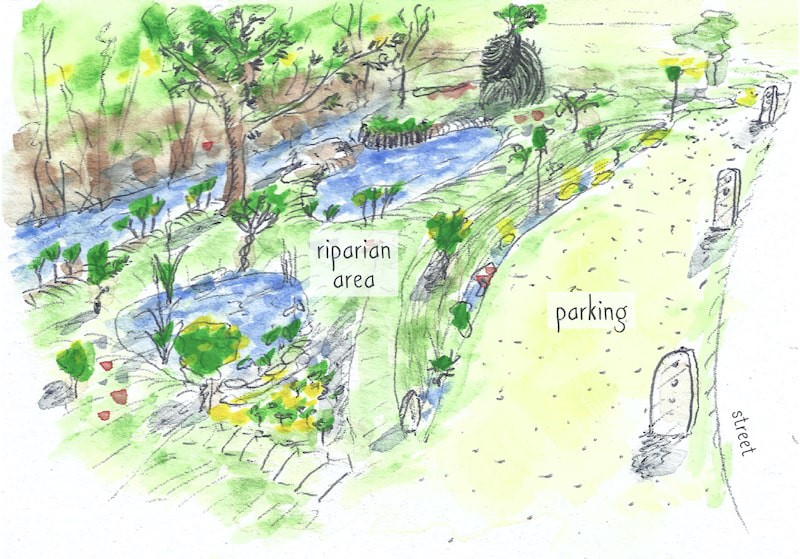
Since we set up this area, I have been learning a lot about riparian areas by observing the tree species that spontaneously grow along this river, among which are alder, ash, hazel. I also noticed several snakes already, which triggers, at the same time, the excitement of witnessing the rewilding of an ecosystem, and the resurgence of archaic fears of the wilderness — even though those snakes were likely to be harmless to humans.
To protect the stream from too much sunlight, I planted many cuttings of willow, which grows so well in wet areas.
I will pollard some of them, that is, to trim all their branches every year, always at the same height.
I will also try to use a few others to make a living wall on one side of the pond. An idea I shared in a previous letter.
Interestingly, experimenting with trees and ecosystems invite me to think long, very long-term. Those experiments with willows started a year ago, but they might continue over years, decades, centuries!
While I sometimes feel in a hurry to find a piece of land and develop my project — how come I haven’t started? I am almost 40! —; while I wonder when the current society will collapse — this year? next year? —; while I am never even sure if I will wake up tomorrow; willows paradoxically ask me to slow down.
“However uncertain these times may be - they whisper to me -, stay calm, trust us, trust Life…”

Cheers ;)
Lénaïc
Did you like this article?
Great! Then you may also like to read my project of an experimental forest garden.
